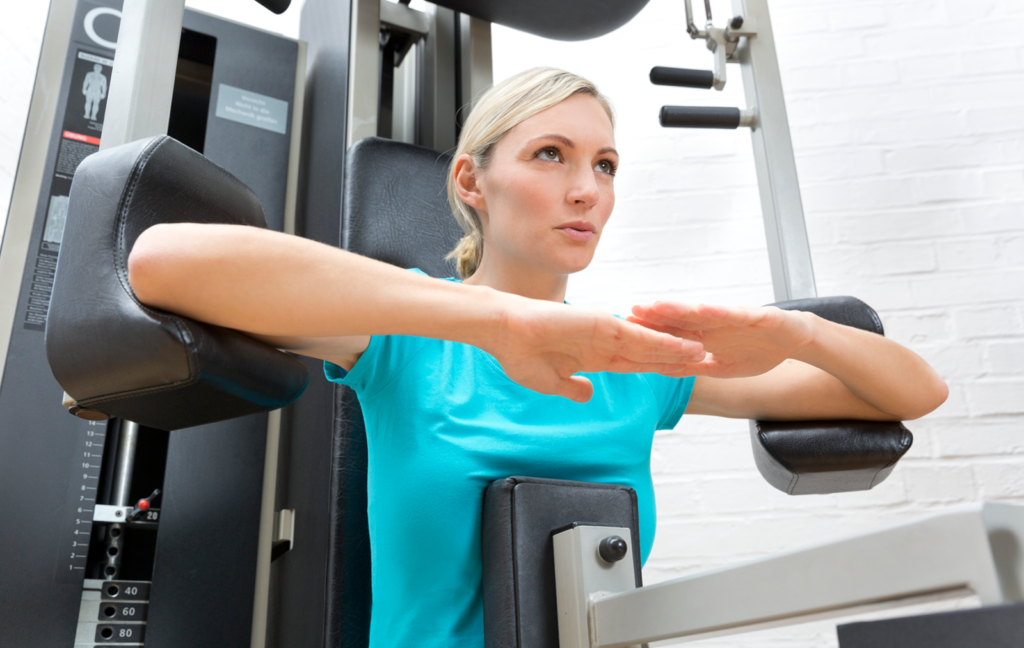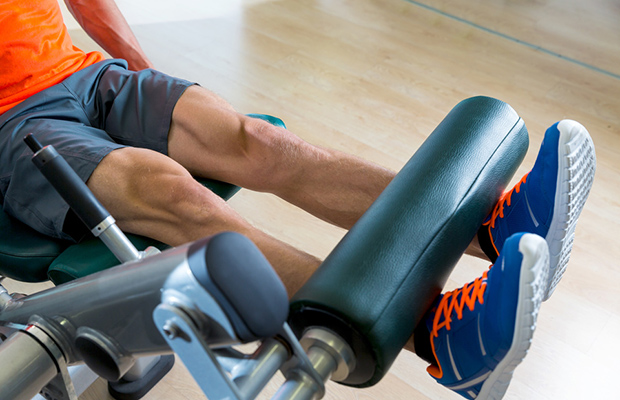In this post we discuss what the resistance profile of an exercise is and why it matters for injury rehabilitation.

Force, or rather your body’s ability to tolerate it is the reason any injury occurs.
This can occur in a single incident like a fall for example, or more chronically through activities like running.
Applying force to your body is also how you recover from injury and potentially avoid it in the first place however.
So if force can injure you but also help you get better, it seems obvious that getting the dose right is critical.
Whilst you’re likely aware that using more weight in an exercise means you’re applying more force to your muscles, few people consider something called the resistance profile of an exercise.
This can have a surprising effect on the amount of force you’re actually dealing with.
What is a resistance profile?
The resistance profile is essentially where the exercise gets more challenging and where it gets easier.
It’s a product of the moment arm (the distance between the line of force and the joint being challenged) and if you’re using a machine, how that machine manipulates the force via devices like cams.
Humans are generally stronger in the mid range position of joints and weaker at either end.
Having the resistance profile of an exercise match this strength profile as closely as possible has been shown to produce greater muscle activation and superior results.
The resistance profile of leg extension machines

You may have noticed on many leg extension machines the most difficult part of the exercise is attempting to straighten your knees.
This is because your thigh muscles aren’t able to generate as much force in this position.
As you fatigue you’ll typically start to move quicker in an attempt to compensate for this.
Whilst it’s no secret that humans are weaker in this position, machine manufacturers don’t usually consider this.
The ideal knee extension machine would offer less resistance in this part of the range but few actually do.
For example in a study that examined 3 different knee extension devices, very different resistance profiles were found.
The investigators selected a 20 lbs weight on each device and used a force gauge to measure the force offered at 5 degree angles throughout the machine’s range of motion.
A Nautilus leg extension machine offered 9.7 lbs in the start position and 20.2 lbs at the end. Notice this is precisely the opposite of the resistance profile required for humans.
A Universal machine gave 41.1 lbs at the start and 27.9 lbs in the finish position.
Lastly a N-K table device (a make shift leg extension device fitted to the end of a treatment table) produced 9.7 lbs of resistance in the start position, 27.5 lbs in the mid range position and 15.4 lbs at the end of the range.
Remember in each case a 20 lbs weight was selected.
Why is the resistance profile of an exercise important?
The majority of my clients have already been through some type of rehabilitation process. In many cases the exercises they were given failed to help them.
One of the main reasons for this is the resistance profile of the exercises did not match where they were stronger and weaker.
Imagine for a moment you were trying to build strength in your thigh muscles because you have osteoarthritis of the knee.
Using each of the devices described in the study above would lead to very different outcomes. For many people the Nautilus machine would be unusable.
This effect doesn’t just occur on leg extension machines either. It can be found on most shoulder exercises that use resistance tubing and some that don’t even use equipment at all such as Y-W-T exercises.
So what can you do with this information?
The first thing is to be aware this effect exists.
Some people get disillusioned with exercise and rehab because everything they try makes them feel worse.
The resistance profile of the exercise along with the weight selected is one of the primary reasons for this.
Now of course you just want to feel better, you don’t necessarily want to become an expert in biomechanics.
You can easily test an exercise’s resistance profile however.
Simply select a weight that’s challenging at the start of the repetition and see if you can slowly move it to the end of the repetition without speeding up.
If that’s not possible then the resistance profile is probably not ideal.
A good work around for this situation is to split the exercise into two different parts. Train the half where you’re stronger with a heavier weight and use a lighter one for the weaker portion.
Summary
If an exercise causes you issues, it’s the exercise that’s the problem not you.
One possibility is the resistance profile of the exercise doesn’t match where you’re stronger and weaker. Try the work around suggested above, or drop the exercise all together if it continues to cause you issues.